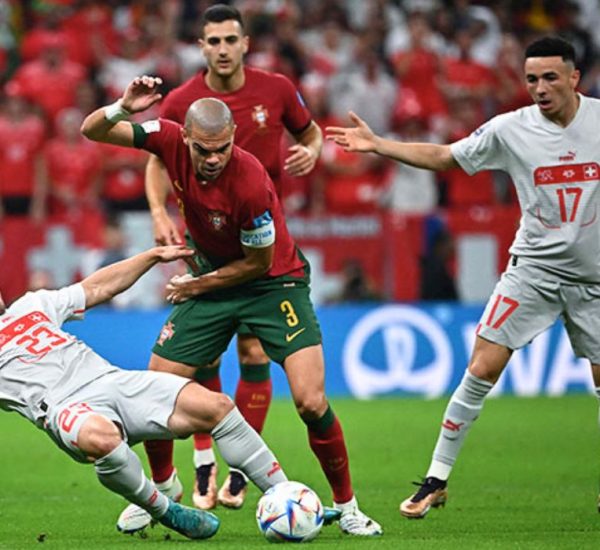Soccer is the most popular sports game on the planet. There are over 3.4 billion soccer fans worldwide. Besides, you will find more than 250 million soccer players across 200 countries.
But how did it all start? Who is the inventor of soccer?
Cuju, an ancient Chinese ball game, is considered the first form of soccer by FIFA. Therefore it is right to say that China is the inventor of soccer. Moreover, Cuju bears many similarities with modern soccer, which became popular in England during the mid 19th century.
This article brings you everything about the history of soccer. So keep reading to learn how the game evolved.
Where was soccer invented?
Ball games similar to soccer have existed for years in many countries. However, China is regarded as the first country to practice a game similar to modern soccer.
Ancient China and Cuju
Although the origin of Cuju is from China, people from Japan, Vietnam, and Korea also played the game. Cuju, which translates to kick a ball, was famous among military people from China in the 3rd–2nd century BC.
Cuju involves kicking a ball into a net. Handling the ball with hands is strictly prohibited. Cuju was practiced in big cities as entertainment, and military cavaliers used it to enhance their fitness levels. Besides, the game had rules.
During the ruling of China by the Han Dynasty, Cuju gained widespread popularity. Being a great admirer of the ball game, Han emperor Wu Di allowed the game inside the imperial palace.
Despite China being credited as the inventor of soccer, other versions of ball games existed in different countries.
Ancient Greece
The Greeks played Episkyros, a ball game described as being violent. It was primarily men who played the game, although women also participated. Teams of 12 to 14 players competed against each other. Episkyros players were allowed to use their hands during the fixtures.
The UEFA European Championship trophy has the depiction of an Episkyros player on it. The Episkyros is more identical to rugby than modern soccer.

The Romans and The Harpastum
The Harpastum is an adaptation of the ball game Episkyros played in Ancient Greece. The Roman Empire practiced the Harpastum, which they referred to as the small soccer game.
Similar to the Episkyros, the Harpastum is a violent game. It often results in severe injuries of players who practice the sport. Again, Harpastum is more related to rugby than modern soccer.
Native Americans
Native Americans played a soccer game in 1586 and 1610 that involved two teams kicking a ball. The Inuit practiced Aqsaqtuk on the ice.
Native Americans in 1610 played a ball game called Pahsaheman. Another Native American game, the Pasuckuakohowog, bears similarities with modern-day association soccer (or football).
Australia
Richard Thomas saw Aboriginal people in 1841 in Australia playing a form of the soccer game. The game involved kicking a ball made from the skin of the possum. He mentioned that other players would then jump in the air to catch the ball.
New Zealand
The Māori practiced Ki-o-rahi, which involved scoring points with the ball (kī). The game consisted of two teams of seven players.
Ki-o-rahi is played on a round field consisting of zones. Points are scored by touching the boundaries (pou) and then hitting the target (tupu).
More countries practiced a ball game that resembled modern soccer as the years went by.
England, the Inventor of Modern Soccer
Although many forms of soccer existed earlier, England is where modern soccer evolved. The creation and implementation of soccer rules unified the soccer games we see today. But, it was not always like that.
In the early 19th century, soccer became a popular sport in colleges and universities across England. However, since there were no universally accepted soccer rules, each region would have regulations. As a result, it led to controversy and turmoil during soccer matches between different teams.
Creating a standardized set of rules became a necessity to tackle these issues. Thus, a first attempt was made in the mid 19th century to unify soccer rules.
The Cambridge Rules
Back in 1848, students from Cambridge University attended a meeting to set up new soccer rules. The aim was to create a set of regulations that all teams would follow.
After much effort and several brainstorming sessions, a decision was agreed upon regarding the new soccer regulations. It gave birth to the Cambridge Rules, which became popular in no time.
Schools and universities around England widely accepted the Cambridge Rules. As a result, a total of 11 soccer rules came into effect. Most of the regulations are present in modern soccer.
The Cambridge Rules included soccer rules like the kick-off of a soccer game in the center circle. Besides, pushing and tripping were not allowed in the Cambridge Rules and were considered foul. Last but not least, the team with the most goals is declared the winner of the soccer match.
The Sheffield Rules
The Sheffield Rules arrived 10 years after the Cambridge Rules. However, the Sheffield Rules became famous in no time within the city of Sheffield. Later, the same soccer rules gain acceptance by other teams outside of the city of Sheffield.
The Sheffield Rules included laws such as the prohibition of handling soccer balls using the hands. In addition, a kick-out was introduced when the ball went out of play over the goal-line.
Few Sheffield Rules have kept their place in modern soccer. The Sheffield Rules were practiced by the player from the city of Sheffield between 1858 to 1877.
Foundation of the Football Association (1863)
The Football Association (or simply The FA) is the governing body of association soccer in Britain. So there is no harm in saying that Ebenezer Morley is the father of The Association. The London-based solicitor came up with the idea to implement soccer rules in soccer matches.
A first meeting held at the Freemasons’ Tavern in Great Queen Street led to the formation of the Football Association (The FA) on October 26, 1863. Besides, representatives from London clubs welcomed the opportunity to implement a standardized set of soccer rules.
It took six meetings and 44 days for the original soccer rules drafted by Ebenezer Morley to be accepted. Finally, a booklet consisting of the soccer rules was published, which cost a shilling and sixpence.
The FA organized a first soccer match with the newly drafted soccer rules where Barnes and Richmond faced each other. The game took place 11 days after the approval of the soccer rules, and it ended in a bore draw.
The Football Association and IFAB
It took many years before English clubs finally embraced the soccer rules.
The Football Association is responsible for organizing professional and amateur soccer games within its area. Besides, it has the role of managing domestic competitions like the FA Cup. The FA also works on the recruitment of the national team’s coach.
The FA is a member of both the UEFA and FIFA. In addition, the governing body holds a seat on the International Football Association Board (IFAB). IFAB is responsible for the Laws of the Game.
The 17 Laws of the soccer game are listed below:
- Law 1: The Field of Play
- Law 2: The Ball
- Law 3: The Players
- Law 4: The Players’ Equipment
- Law 5: The Referee
- Law 6: The Other Match Officials
- Law 7: The Duration of the Match
- Law 8: The Start and Restart of Play
- Law 9: The Ball In and Out of Play
- Law 10: Determining the Outcome of a Match
- Law 11: Offside
- Law 12: Fouls and Misconduct
- Law 13: Free Kicks
- Law 14: The Penalty Kick
- Law 15: The Throw-in
- Law 16: The Goal Kick
- Law 17: The Corner kick
End of Line
The origin of soccer can be traced back to the Ancient Chinese ball game Cuju. The ball game has evolved to the modern soccer we know today. The soccer rules are what made the soccer game more interesting.



